
Hiking. Is it a sport for everyone? (project)
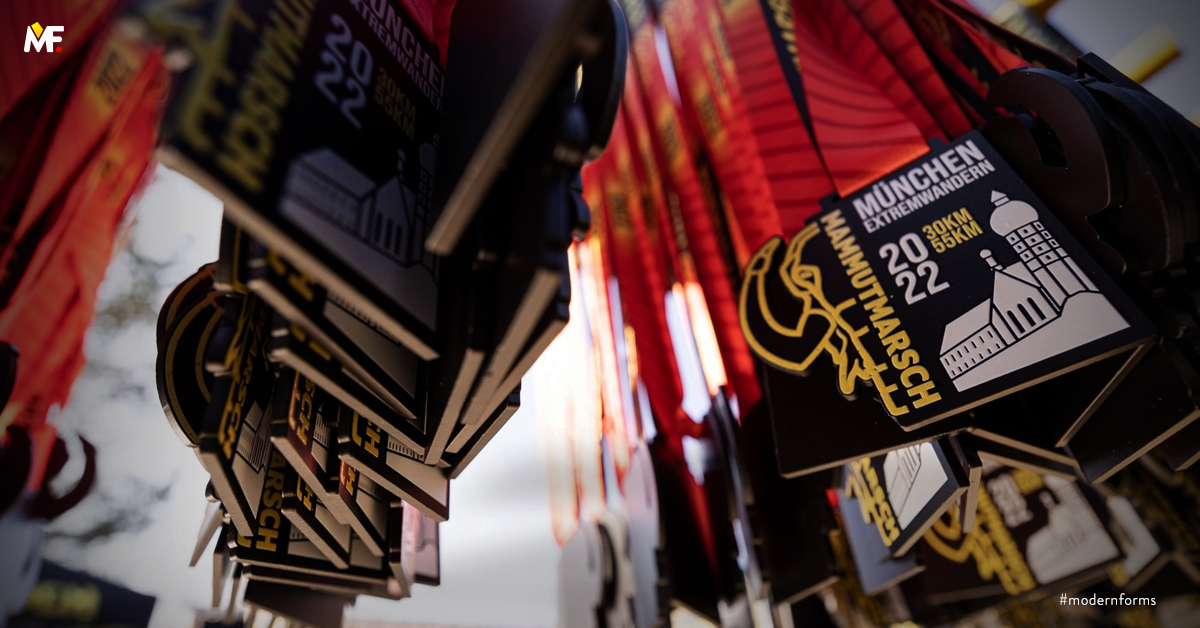

You know the most popular hiker of all time from your childhood. Admit it yourself – when you watched the iconic Moomins, didn’t you admire the Tramp? A somewhat nostalgic wanderer who didn’t have to reckon with anyone or anything. He didn’t book hotels, check timetables or buy plane tickets. He didn’t even bother with his equipment or his physical condition. He simply threw his rucksack over his shoulder and walked in any direction he wanted. You can do the same.
Don’t like running? Doesn’t the bike appeal to you either? Then you might want to take a serious interest in marching. Is it not a sport? Is it really?
Health benefits of marching:

Why else should you start marching? Walking, marching, hiking – whatever you call it – is an activity accessible to everyone, regardless of the weather, season, physical condition or age. You can walk in the mountains, in the wilderness, in forests, on beaches, but you can also walk in your immediate surroundings, discovering more and more new places and enjoying the outdoors.
Marching can be seen as recreation, a break from everyday responsibilities (e.g. desk work), but also as a low-injury workout (especially regular brisk walking). It’s a way to be active solo or in a group. You can invite all family members, friends to join you on a hike, or take part in organised walks or hikes with strangers.
You can start your hiking adventure today. You will definitely need comfortable shoes and socks. They don’t have to be professional trekkers. For a start, sporty shoes with thicker soles that will keep you comfortable walking on a variety of surfaces will suffice. If you are planning excursions further from home – take along a rucksack, water, snacks (preferably fruit or chocolate) and something for the unpredictable weather.
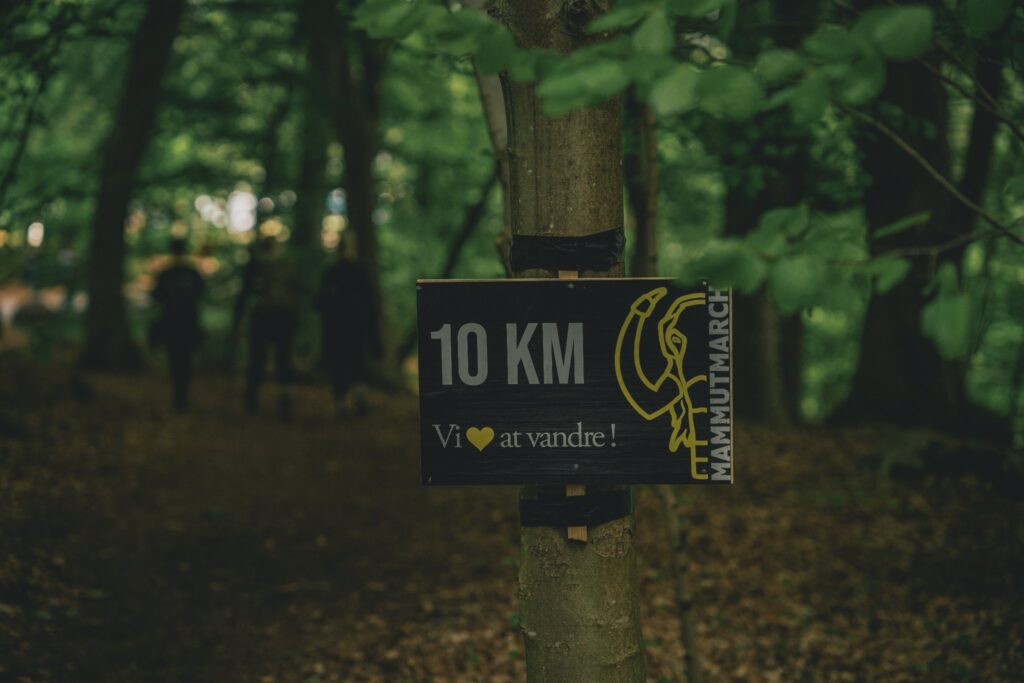
Training for beginner hikers:
Planning a multi-day backpacking tour? Start training as early as 6-9 months in advance to prepare your body for a prolonged effort. Don’t limit yourself to just walking – cycling, swimming, light jogging with uphill stretches will improve your fitness brilliantly.
Hiking can be a real test of character and breaking down one’s barriers. The organisers of the Mammut March know this. What is the Mammutmarsch? It is an extreme hiking challenge, during which you and a group of hikers tackle trails of various lengths through picturesque locations in Germany, Austria and Denmark.
The organisers always try to keep the route off the main roads. The routes are generally not easy. There is plenty of varied terrain, lakes and forests. There are also well-located refreshment points, where fresh water, fruit and snacks await walkers.
At each stage of the Mammoth March you can count on the support of participants (it is always better to walk in a group) and volunteers. The routes are well marked, plus you are given cards to help you find your way using GPS navigation. The minimum requirement to take part in the march is the experience of walking a 35 km route.
We have been working with the organisers of the Mammoth March since April 2021. To date, we have produced more than 29,000 medals for march participants in Germany. We have further productions ahead of us for the treks in Denmark.
The Mammutmarch medals are made of black steel with printing in a reference to the logo (yellow, white, black). The awards for the different editions are different. The shape of the medal changes (rectangle, circle, pentagon) and so does the printing – the medals have personalisation due to the distance, the city and the country in which the march is currently taking place. Also, the ribbons for the medals are not the same all the time – the colours and prints can also be personalised for a specific event.
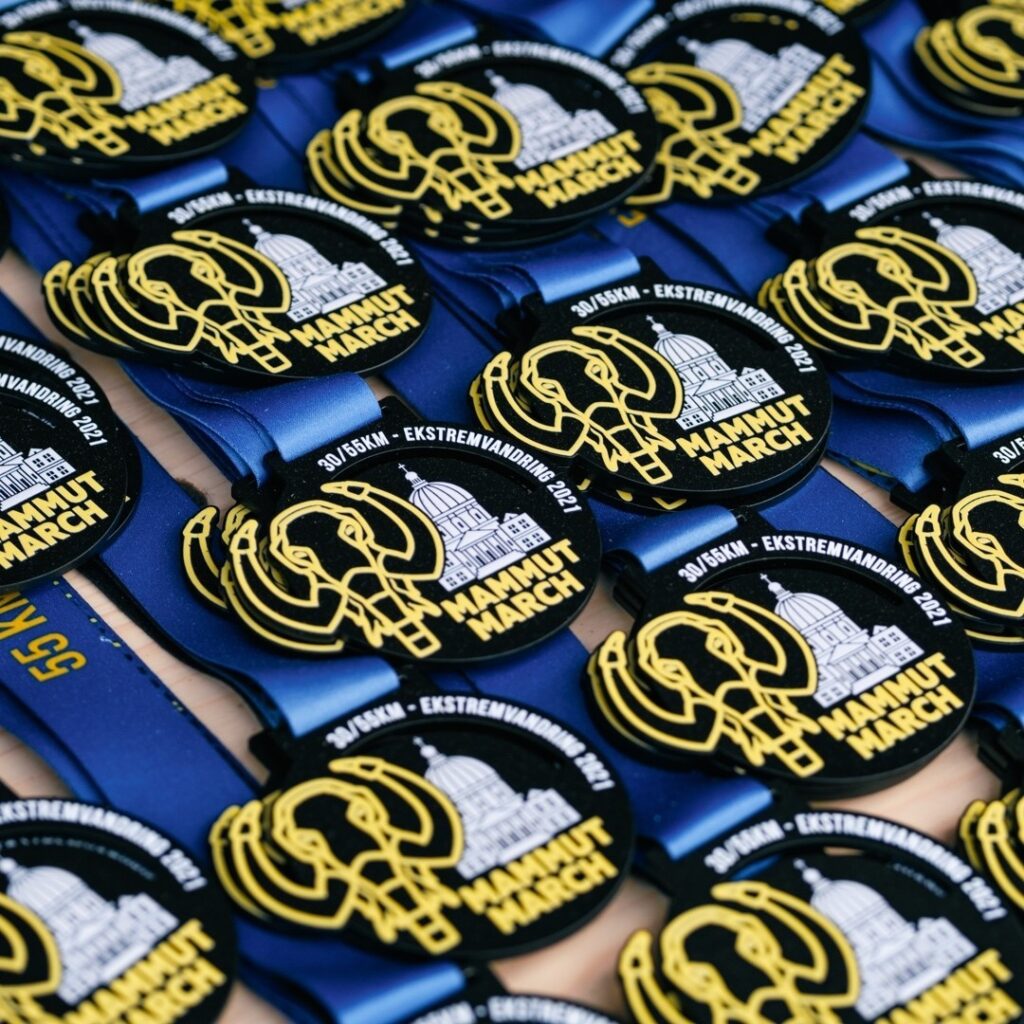
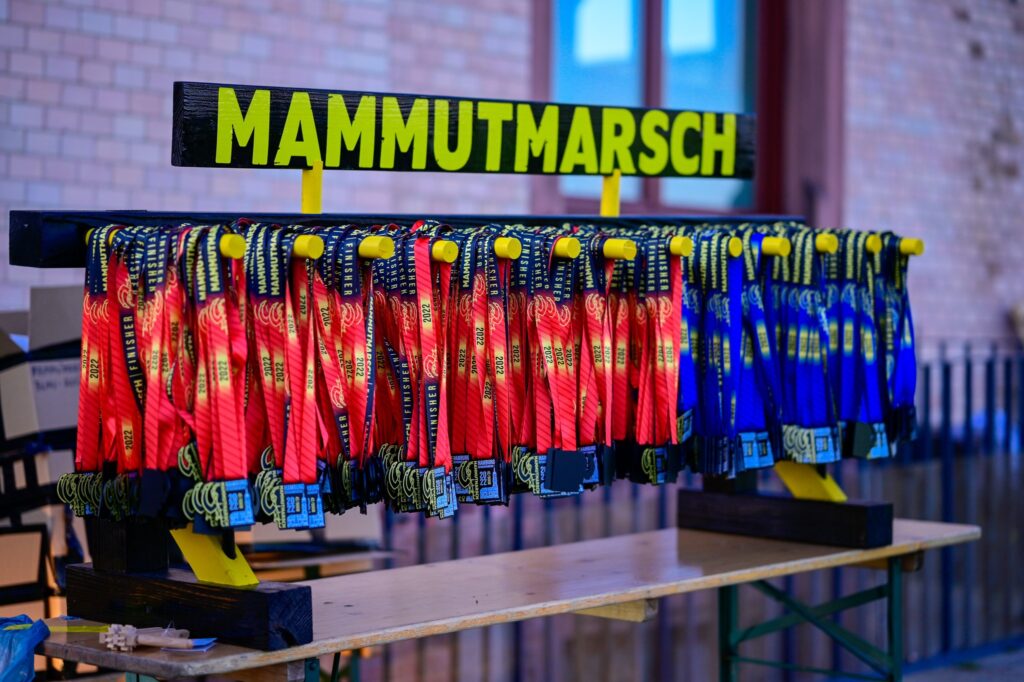
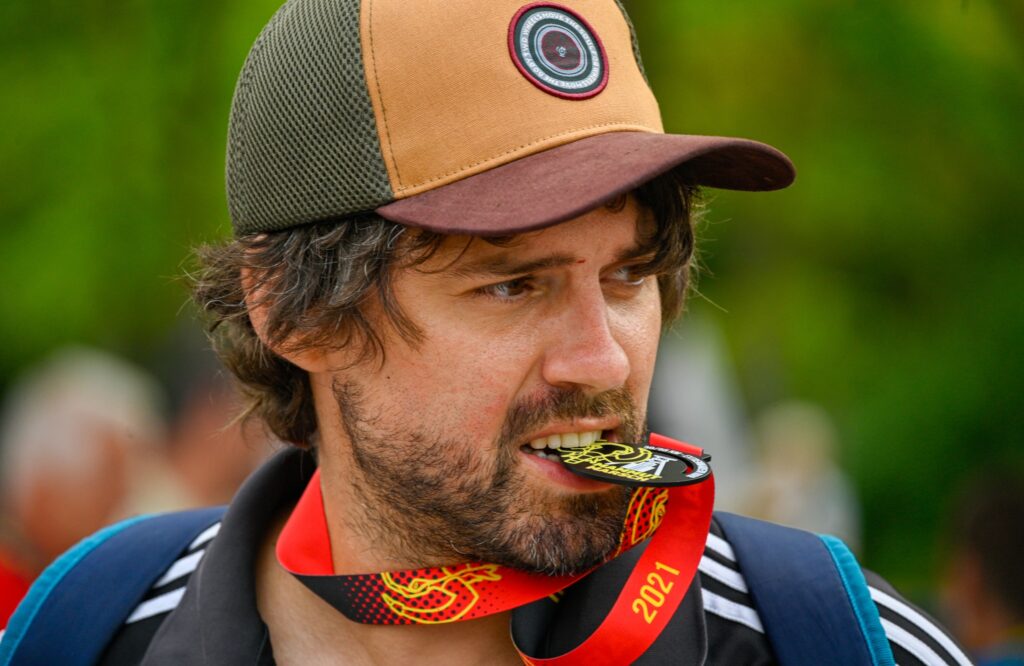
photos: MammutMarch
This website uses cookies, thanks to which our website may work better. READ MORE